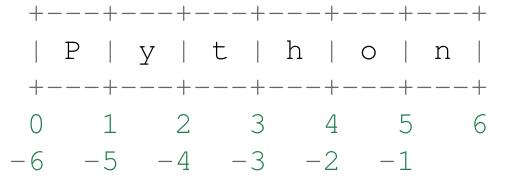py3学习笔记2(字符串)
Posted ZaleJ
tags:
篇首语:本文由小常识网(cha138.com)小编为大家整理,主要介绍了py3学习笔记2(字符串)相关的知识,希望对你有一定的参考价值。
除了数字计算,python还可以通过多种方式操作字符串
他们可以被封装在单引号(‘...‘)或者("...")双引号中,使用这两种方式都可以得到相同的结果。(在单引号中,‘\n‘等将不像在双引号中和C语言等其他语言的字符串定义中显示回车,而是显示其本身,只有显示单引号时使用‘\‘‘)
使用‘\‘可以摆脱引号的引用关系与字符意义。
>>> ‘spam eggs‘ # single quotes ‘spam eggs‘ >>> ‘doesn\‘t‘ # use \‘ to escape the single quote... "doesn‘t" >>> "doesn‘t" # ...or use double quotes instead "doesn‘t" >>> ‘"Yes," he said.‘ ‘"Yes," he said.‘ >>> "\"Yes,\" he said." ‘"Yes," he said.‘ >>> ‘"Isn\‘t," she said.‘ ‘"Isn\‘t," she said.‘
使用print()函数将获得一个可读性更好的字符串
>>> ‘"Isn\‘t," she said.‘ ‘"Isn\‘t," she said.‘ >>> print(‘"Isn\‘t," she said.‘) "Isn‘t," she said. >>> s = ‘First line.\nSecond line.‘ # \n means newline >>> s # without print(), \n is included in the output ‘First line.\nSecond line.‘ >>> print(s) # with print(), \n produces a new line First line. Second line.
如果你需要将‘\‘以及其后的字符显示字符意义,可以在字符串前加‘r‘转义成行字符串
>>> print(‘C:\some\name‘) # here \n means newline! C:\some ame >>> print(r‘C:\some\name‘) # note the r before the quote C:\some\name
有些字符串需要占用许多行,这时可以使用"""..."""或者‘‘‘...‘‘‘行尾将自动地包含在字符串中,也可以加入额外的‘\‘来确保这一点。
print("""Usage: thingy [OPTIONS] -h Display this usage message -H hostname Hostname to connect to """)
以上代码将打印
Usage: thingy [OPTIONS] -h Display this usage message -H hostname Hostname to connect to
另外,字符串可以使用‘+‘与‘*‘进行操作
>>> # 3 times ‘un‘, followed by ‘ium‘ >>> 3*‘un‘ + ‘ium‘ ‘unununium‘
两个或多个相邻的字符串将自动组合在一起
>>> ‘Py‘ ‘thon‘ ‘Python‘
但无法使用变量对其进行以上操作
>>> prefix = ‘Py‘ >>> prefix ‘thon‘ # can‘t concatenate a variable and a string literal ... SyntaxError: invalid syntax >>> (‘un‘*3) ‘ium‘ ... SyntaxError: invalid syntax
如果你渴望使用变量对字符串进行连接,可以使用‘+‘
>>> prefix + ‘thon‘ ‘Python‘
这个特性可以用于当你想分割一个非常长的句子时
>>> text = (‘Put several strings within parentheses ‘ ... ‘to have them joined together.‘) >>> text ‘Put several strings within parentheses to have them joined together.‘
你也可以使用类似于其他语言中队数组的索引(index)操作来操作字符串
>>> word = ‘Python‘ >>> word[0] # character in position 0 ‘P‘ >>> word[5] # character in position 5 ‘n‘
负数将从最后开始倒着索引
>>> word[-1] # last character ‘n‘ >>> word[-2] # second-last character ‘o‘ >>> word[-6] ‘P‘
当然,-0和0是一样的,负数索引从-1开始。
除了索引,python字符串还支持切片(slice),截取字符串中的一部分
>>> word[0:2] # characters from position 0 (included) to 2 (excluded) ‘Py‘ >>> word[2:5] # characters from position 2 (included) to 5 (excluded) ‘tho‘
如下形式的两个切片形式将组成一个完整的字符串
>>> word[:2] + word[2:] ‘Python‘ >>> word[:4] + word[4:] ‘Python‘
当冒号左侧没有数字时默认将从头开始,右侧没有数字时将读到末尾
>>> word[:2] # character from the beginning to position 2 (excluded) ‘Py‘ >>> word[4:] # characters from position 4 (included) to the end ‘on‘ >>> word[-2:] # characters from the second-last (included) to the end ‘on‘
你可以用以下这种方法简介地记住切片的位置

使用index方法访问超过数组长度的元素将返回错误
>>> word[42] # the word only has 6 characters Traceback (most recent call last): File "<stdin>", line 1, in <module> IndexError: string index out of range
而使用slice方法将不受限制,超出时将默认为字符串末尾,没有内容时将返回空字符串
>>> word[4:42] ‘on‘ >>> word[42:] ‘‘
注意,在python中,字符串一旦被定义将无法被改变,以下试图改变字符串内容的行为都将报错
>>> word[0] = ‘J‘ ... TypeError: ‘str‘ object does not support item assignment >>> word[2:] = ‘py‘ ... TypeError: ‘str‘ object does not support item assignment
如果你需要一个不一样的字符串,只能创建一个新的
>>> ‘J‘ + word[1:] ‘Jython‘ >>> word[:2] + ‘py‘ ‘Pypy‘
另外,你也可以使用len()函数来获取一个字符串的长度
>>> s = ‘supercalifragilisticexpialidocious‘ >>> len(s) 34
以上是关于py3学习笔记2(字符串)的主要内容,如果未能解决你的问题,请参考以下文章